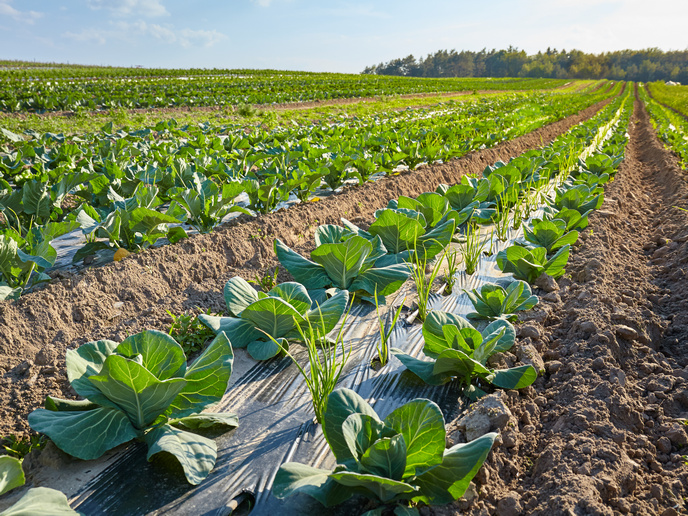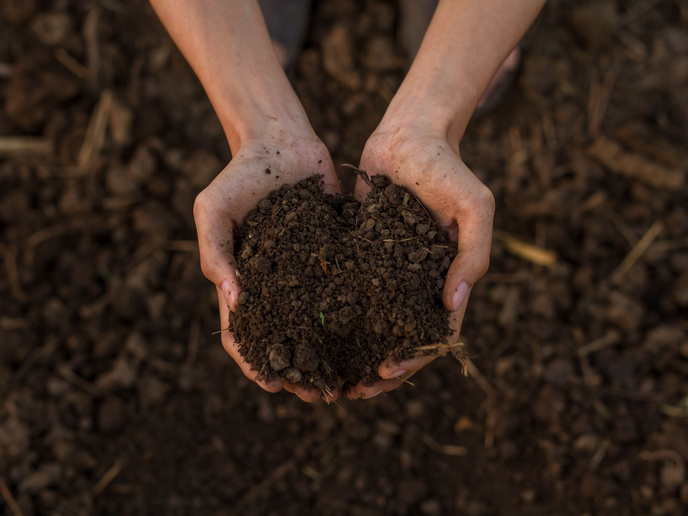Call to action on plastic soil contamination
While the presence of microplastics in the ocean has been extensively studied over the past few decades, the existence of microplastics in soil has only recently become a major topic of research. “This part of the problem has been completely overlooked,” says PAPILLONS(opens in new window) project coordinator Luca Nizzetto from the Norwegian Institute for Water Research(opens in new window). “We know that agriculture is increasingly reliant on plastics, for example for greenhouse films, mulching films, micro-irrigation pipes and crop protection nets. But we don’t have much evidence of what is going on regarding the release and impact of microplastics on soil.”
Lab experiments and field tests to understand impact of plastic
To address this, the PAPILLONS project brought together a multidisciplinary consortium of 20 partners from across Europe, including environmental scientists, polymer engineers, economists and social scientists. The project also worked closely with farmers and policymakers at both the national and EU level. “We first set out to better understand the properties of plastic use in agriculture,” adds Nizzetto. “We wanted to know what conditions might allow for the safe use of plastic, how quickly it degrades, and how easily micro and nanoparticles are released.” This was achieved through carefully constructed lab experiments, which also looked at how plastic particles move through soil or are transported by other processes. Large-scale field experiments at three locations across Europe were then carried out, to better assess the impact of plastic on both soil and crops. “We developed new methodologies for achieving this,” remarks Nizzetto. “We also tried to estimate how much microplastic is actually in the soil.”
High concentrations of microplastics in soil
The project found high concentrations of microplastics in soil across Europe. While agricultural plastic was identified as a major source of pollution, sewage and compost were also contributors. Even soils never treated with plastics were found to be contaminated, due in part to proximity to polluted sources. These findings will shortly be published in an upcoming academic paper. “We also found in lab and field experiments that soil and plant systems are sensitive to this pollution,” notes Nizzetto. “Microplastics for example can have an effect on the nitrogen cycle, which is critical for crop growth.” In lab experiments, the project recorded substantial physiological responses in plants to microplastics. These include a decline in chlorophyll, the molecule responsible for transforming energy from light into chemical energy. Elevated levels of stress hormones were also found in both lab and field crops due to the presence of microplastic in soil.
UN action on plastic pollution
These findings are helping to inform policy and shed light on the issue. “Our project ran at the same time as the EU was developing the Soil Monitoring Law(opens in new window),” remarks Nizzetto. “While early drafts made little mention of plastics in soil, new drafts now deal with the problem of plastics pollution.” The project also suggests that biodegradable plastics are not the perfect solution. Fragments can be released that may not promptly degrade and can persist in certain environments, says Nizzetto. “This project has shown that solutions require a holistic understanding of the problem,” he adds. “We have shared this message with industry, and beyond the EU to the UN’s Intergovernmental Negotiating Committee(opens in new window) on Plastic Pollution.”







